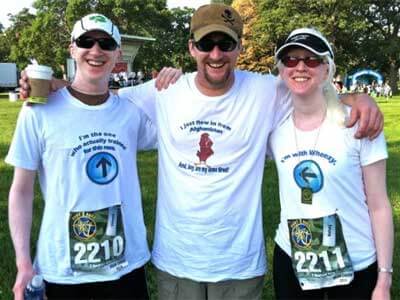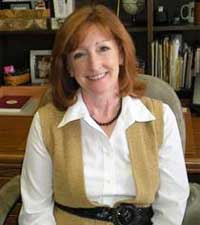Albinism.
Some have heard the word before, but few people fully understand the difficulties a person with albinism faces.
Individuals with albinism lack pigmentation, usually in the hair, skin and eyes. The lack of pigmentation in the eyes causes visual impairments and can also cause nystagmus (involuntary movements of the eyes). While these impairments can lead to challenges in school, the difficulties that individuals with albinism face can be overcome with tools and patience.
A newly released webcast is one of the tools that can help people understand albinism and overcome some of its challenges.
Susan Dalton, an alumna of the Visual Disabilities program in the NIU College of Education and an adjunct professor in the Department of Special & Early Education (SEED), is featured in the webcast titled “Including Students with Albinism.”
Difficulties in school are not the only challenges that individuals with albinism face.
Consider the situation in Tanzania and East Africa, where individuals with albinism are targeted, mutilated and sometimes murdered. While most of the world is much more tolerant, people with albinism continue to face discrimination.
Raising awareness about the facts of albinism will help to dispel misunderstandings of the disease, Dalton says, which can in turn provide a better life for all with albinism.
Dalton has been involved in raising awareness about albinism for many years.
She first became involved when her daughter was born with albinism and needed more information about the genetic disease. Two of her three children were born with albinism; they are pictured here after the completion of the Fort to Base Race at the Great Lakes Naval Base in September. Her eldest son is also with them, having just returned from a tour of duty in Afghanistan the previous day.
Dalton’s webcast was released in mid-October. Anyone can access the webcast, which Dalton says is a new way to get information to teachers and others who can benefit from it.
“In the past, I’ve been able to talk to teachers on the phone or correspond with them through emails,” she says. “By having [the webcast] free and readily available, I’m hoping that if teachers do get students with albinism in the classroom, they will be able to view [the webcast], which is only about 20 minutes long, to give them an overview of what to expect or strategies that might help.”
This type of innovative thinking is not new to the Perkins School for the Blind, a recognized leader in serving people with visual impairments and multiple disabilities.
Perkins officials contacted Dalton through the National Organization for Albinism and Hypopigmentation (NOAH) to invite her to participate in the project.
A key aspect of the webcast was the selection of the interviewer, Dalton says. “He is not an expert in the vision field,” she says, “so his questions are more of what an average person in the community would be asking.”
Of the video’s scope, Dalton says “it’s neat that it can be used with a typical classroom teacher or for parents, yet can also be used as part of instruction at the university level for teachers in training. It gives them a different perspective on the student. It provides students who plan to work with students who are visually impaired with a broader understanding of the entire classroom picture, rather than just focusing on specific vision issues.”
Even though the webcast has only been out for a brief time, it already been used in classes in the NIU Visual Disabilities Special Education Program.
Dalton calls herself proud to be a part of NIU’s program.
“It’s not only a large program, but it produces quality teachers and mobility specialists,” she says. “Because of my involvement in many national organizations I am aware of the outstanding reputation that [Northern Illinois University] has for its program in visual disabilities.”


